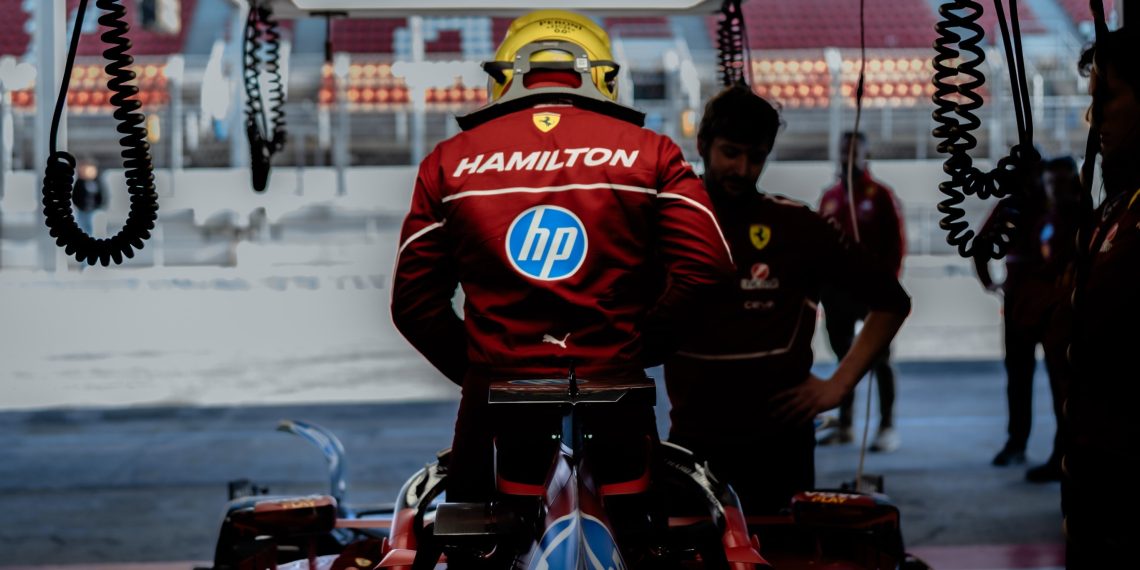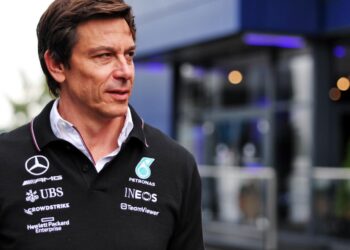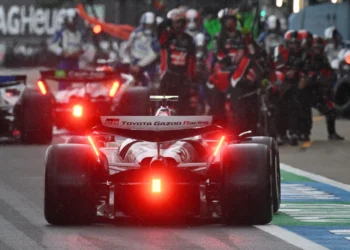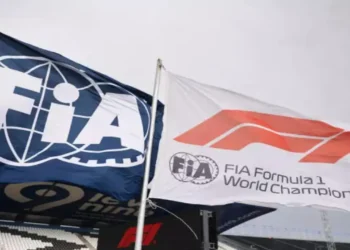Lewis Hamilton’s highly anticipated transition to Ferrari has already hit a roadblock—at least in terms of on-track preparation. The seven-time World Champion has officially maxed out his TPC (Testing of Previous Cars) allocation, meaning he won’t get another chance to drive a Ferrari F1 car until the official pre-season test in Bahrain on February 26-28.
With every moment in the SF-23 crucial for understanding Ferrari’s DNA before he jumps into the 2025 challenger, Hamilton’s testing program has been cut off at just the point where he was getting into rhythm. And ironically, it’s Ferrari’s own complaints about Red Bull that helped bring about the very rule that is now limiting their new superstar.
Ferrari’s Own Rule Change Comes Back to Bite Them
Under TPC regulations, race drivers can conduct a maximum of 1000km over four days using a two-year-old F1 car. This rule wasn’t always in place. Previously, teams could squeeze in as many laps as they wanted in their older machines—a loophole that Red Bull exploited last year when they ran Max Verstappen in his 2022 RB18 at Imola ahead of the Spanish Grand Prix.
Ferrari took issue with this, claiming Red Bull was using TPC running to aid current car development rather than just keeping their driver sharp. Team Principal Frédéric Vasseur led the charge, pushing for regulatory changes to separate race driver TPC running from young driver development programs.
“It’s more development than something else,” Vasseur argued at the time. “It’s not to give mileage to Max between Barcelona and Austria, that Tuesday you do nothing, go to Imola. It’s clearly development.”
His concerns were validated in the 2025 rulebook, with race drivers now capped at four TPC days, while reserve and academy drivers—such as Antonio Giovinazzi, Zhou Guanyu, and rising F2 star Dino Beganovic—get 20 days of track time.
Fast forward to Hamilton’s Ferrari debut, and the very rule Ferrari lobbied for has now become a limiting factor in their own star driver’s acclimatization process.
Hamilton’s Testing Journey: A Bumpy Ride So Far
Hamilton first got behind the wheel of a Ferrari on January 22 at Fiorano, marking a historic moment as the Brit donned the Scuderia’s legendary red for the first time.
A week later, he was back in action at Circuit de Barcelona-Catalunya, sharing testing duties with Charles Leclerc across two days. However, Hamilton’s program was derailed by a crash on the second day, raising questions about how much useful data he was able to extract from the session.
Ferrari later rolled out the SF-23 one last time for Hamilton earlier this week, completing his final day of permitted TPC running. With that, the door on private Ferrari testing has officially closed.
Next Steps: What Hamilton Can Still Do Before Bahrain
While Hamilton can’t drive an F1 car again until Bahrain testing, he won’t be entirely off-track before then. His next outing comes on February 19, when Ferrari unveils its 2025 challenger and completes its ‘filming day’ run—a strictly limited session meant for promotional footage rather than true performance testing.
However, Ferrari’s real focus now turns to maximizing Hamilton’s transition within the simulator, fine-tuning car setup approaches, and integrating him fully into the team’s operations before the season kicks off.
Did Ferrari Overplay Its Hand?
It’s ironic that the very regulation Ferrari fought for to limit Red Bull’s advantage has now created an unexpected roadblock for Hamilton’s adaptation process. The new four-day, 1000km cap has forced Hamilton to squeeze all his on-track learning into a condensed timeframe, leaving little room for additional refinement before he gets his hands on the 2025 Ferrari in Bahrain.
The question is: Will this lack of extra seat time hurt Hamilton’s opening races? Or will his experience and simulator work be enough to bridge the gap?
Either way, the 2025 season is shaping up to be an intense battle—not just on the track, but in the rulebook, where teams continue to play chess with regulations to gain every possible advantage. And this time, Ferrari may have unintentionally sacrificed its own king before the first move has even been played.













